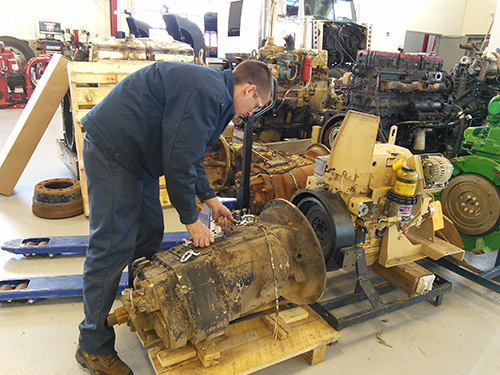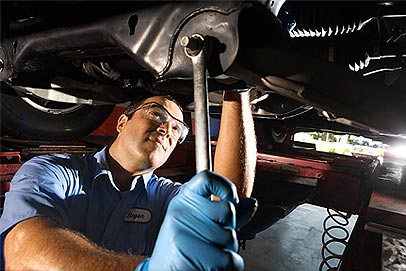
OEM parts for cars are made by a different manufacturer than the one that manufactured your vehicle. OEM parts are used to replace the original part installed by the factory. However, you should know that aftermarket parts are often inferior to OEM parts. You should be careful when purchasing OEM parts. OEM parts and aftermarket parts are different because of the manufacturer. OEM parts may be more expensive than aftermarket parts, and you might spend more money to replace your car.
Aftermarket Parts
Most new cars only use Original Equipment Manufacturer (OEM), but you might be curious about how they differ. Aftermarket parts are manufactured by a manufacturer other than the one who built the vehicle, but they perform the same function. They can be used in place of OEM parts when necessary. Many people actually use aftermarket parts to maintain and repair their cars. You can choose which one you want to purchase.
Aftermarket parts can enhance the performance of your vehicle as well as increase its durability. OEM parts may not be covered by the same warranty. It is also easier to get aftermarket parts because one company may have millions of them. You may not find OEM parts at your local mechanic's shops. The final decision about which aftermarket parts to purchase is up to you.

OEM parts
It is worth looking at the part's original equipment manufacturer and original supplier labels if you're interested in buying parts for your car. The former refers directly to the company which manufactured the part. The latter refers only to the company who made it. OEM car parts are typically more expensive than OES parts. The only difference between OES and OEM parts is their cost. Purchasing OEM car parts is a better investment for your car.
The benefits of OEM car parts over aftermarket parts include their higher quality and guaranteed performance. They fit your car in exactly the same way they did the original part. That means you have less hassle. The manufacturer guarantees its quality and will stand behind it. It will fit perfectly and last longer, so you can rest assured. The warranties on OEM parts are available to protect you in the unlikely event that something goes wrong. An authorized Toyota dealer can sell OEM parts.
Used parts
OEM parts are the original parts manufactured by the car manufacturer. They are made to fit your car model precisely and are guaranteed to work. OEM parts can be cheaper than aftermarket ones. OEM dealers will sell new parts if you need a new braking system. They also last longer than aftermarket parts. But, there are some things to keep in mind before you buy them.
Check the quality of the part first. OEM parts are usually of higher quality and fit your car better than aftermarket parts. OEM parts have a lifetime warranty. OEM parts can be expensive so make sure you only purchase them if they are affordable. But, insurance companies sometimes won't cover OEM parts if you don't ask. It is best to speak with your insurance company before purchasing aftermarket parts.

Original design manufacturer
An Original Design Manufacturer (ODM), is a company that created the car part for a customer. This is different from an Original Equipment Manufacturer, which manufactures the product in bulk. ODMs might provide the seat for Fords, but they could also manufacture the entire car. There are three main differences: financing, design and distribution. Let's examine each one individually. These are the things you need to know if you're interested in becoming an ODM.
Consider first the advantages of working with an OEM. Parts manufactured by a company for another company are sold through a network authorized distributors and service providers. Car parts are an example. They are known as original equipment parts. OEMs also design and manufacture their products. MOPAR, which is an acronym for "motor parts", was once Chrysler Corporation’s primary manufacturer. However, the company now serves as the primary OEM retailer for Stellantis.
FAQ
What qualifications do you need to be a truck-mechanic?
While you may not have the formal qualifications to perform this job, your skills are well-rounded in working on engines and trucks. You are a valuable asset as you can quickly diagnose and solve problems efficiently.
Additionally, you have a solid knowledge of diesel technology that will enable you to determine what parts are necessary to repair our vehicles.
How long does an apprenticeship in automotive mechanics last?
A three-year apprenticeship in automotive mechanics takes. This includes two years in school and two as an apprentice. The first year teaches you all aspects, from theory to practical skills and safety procedures. You'll also learn the safe and efficient use of tools during this first year. After you have completed the first year of training, you will be able to spend an additional year on-the job learning different trades. These years will offer you the opportunity to attend formal classes.
The final year of the program is spent gaining qualifications and becoming certified in the field. These include NVQs (National Vocational Qualifications), that are given after passing specific industry exams. Additionally, HNCs are Higher National Certificates that cover general subjects such management, customer service, and business administration. City & Guilds certificates may be available for those who are interested in becoming qualified in specific trades.
To work as an automotive mechanic, do I need a degree? What about part-time study?
While a degree is not required, it does help. Employers will prefer candidates who have completed a degree. It shows that your efforts have been put in and you have succeeded.
You can still study while working, however. Some universities permit students to do coursework during summer holidays and complete their studies later in a year. Others let students take classes part-time throughout the year.
What information do I need about car mechanics
You don't need to know anything about cars to work as an auto mechanic. It's enough to know how to fix things. It's why many people begin to fix things by fitting brake pads or changing tires.
You need to be able read and comprehend diagrams, follow written instructions and adhere to basic principles of good practice. You must also be able judge if parts need to replaced or repaired.
You should not attempt to fix vehicles without proper training and guidance. This is especially true if you deal with expensive components such as engines or transmissions.
Even though you won’t need to know much more about cars, you will still need to have an in-depth understanding of mechanics and physics. This is how you understand the mechanisms behind engines and brakes.
It is also important to remember that you will need to be able to handle many situations. For example, you may find yourself working on a vehicle that has been involved in a serious accident. Additionally, you will need to have experience with handling accidents and breakdowns.
It is important to be open to learning new skills quickly. Not only will you need to be capable of diagnosing problems, but you also need to be able perform simple maintenance tasks like tightening nuts.
Statistics
- Apprentice mechanics earn significantly less hourly than mechanics who have completed training, with a median wage of approximately $14.50 an hour, according to PayScale. (jobhero.com)
- There were 749,900 jobs available for automotive service technicians and mechanics in 2016, which is expected to grow by six percent through 2026. (jobhero.com)
- The U.S. Bureau of Labor Statistics (BLS) reports that the job outlook for automotive service technicians and mechanics is expected to decline by 4% from 2019 to 2029. (indeed.com)
External Links
How To
How to properly diagnose your car for repair
You should first examine the symptoms your car is showing to determine if it requires repairs. These steps will help you diagnose your car properly.
-
Check engine lights. Check the dashboard light indicators such as the engine light indicator, the oil pressure gauge, the battery light indicator, the coolant temperature gauge, and the RPM gauge. If they have been flashing for more days than usual, it could be a sign that something is wrong with the vehicle.
-
Pay attention to the treads on your tires. Tires with worn treads could cause problems when handling or braking. You should inspect the treads on your wheel. They should be clean, and they should be smooth. It is best to take off the wheels and remove them. A flashlight can be used to check how worn the treads are.
-
Check the level of brake fluid. It is important to keep track of how much brake fluid you have in your car. This helps ensure that your brakes operate properly. Low brake fluid levels could cause your brakes to fail when you apply pressure.
-
The suspension system should be tested. Most vehicles have a suspension system that absorbs shocks and vibrations. It allows for better control, smooth acceleration, and deceleration. You might notice a wobbly feeling or uncontrollable shaking in your vehicle if it has a problem with its suspension. Try putting some weight on your front or rear axle to determine if you have a suspension problem.
-
Examine the steering column. The steering columns are what connect the steering knob to the rest. The steering column can often be damaged by an accident. Replace it if your steering column feels loose or unsteady.
-
Observe the exhaust pipes. The exhaust pipe helps move gases from a combustion chamber into the atmosphere. Your cabin will be effected if your exhaust pipe cracks or leaks. It is also important to repair any bends in your tailpipe immediately.
-
Take a look at the underside of your hood. Look underneath your hood to see if anything looks strange. Leakage of fluids in your engine could indicate that it is leaking. You should also contact a professional technician if there is an unusual odor coming from the engine compartment.
-
Check the air filter. The outside environment collects dust and other particles in the vehicle's filter. A dirty air filter causes your vehicle to run poorly. Replace your air filter regularly.
-
Check the fan belt. Your vehicle's fanbel is what connects the engine and the transmission. If the fanbel breaks, your engine won't turn. It is easy to replace the belt. All you need are a screwdriver & pliers.
-
Check the radiator hose and hoses. The radiator hose carries water from the radiator to the engine. It can crack or become damaged and leak hot liquid onto an engine. The hose can be repaired with a pair or needle-nosepliers, and a wire brush.
-
You should inspect the windshield wipers. Windshield wipers use electricity to clean away snow and rain. They can leave streaks on your windows glass if they stop working. To fix the problem, simply change the washer fluid.
-
You should inspect the cables. Your car's electrical system is powered by batteries. Make sure you disconnect the negative cable before replacing batteries. Failure to do so can damage your alternator.
-
Check the headlights. Headlights illuminate the road ahead of you. Bad visibility can be caused by headlights that don't work correctly. To check if the bulbs have gone out, you can inspect them.
-
Always check your lights. You can warn other drivers if you approach them at night. One that doesn't work could cause you to be distracted, and possibly lead to an injury.
-
Make sure you check your brakes. Before you get in a car accident, your brakes will be slowing down your vehicle. You could lose control of the car and cause a crash if they don't work properly.
-
Change the oil. The oilkeeps your engine lubricated. This oil helps to prevent metal parts becoming too worn out. It is recommended that you change your oil at least once per month.